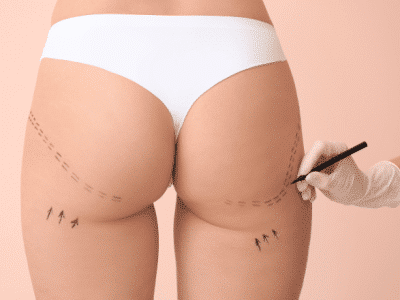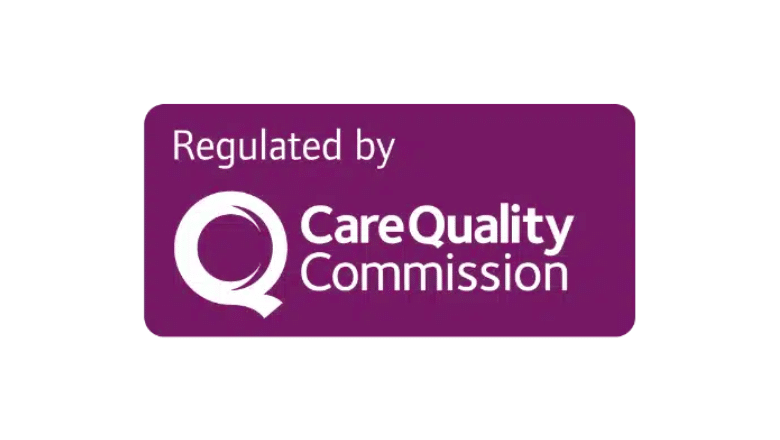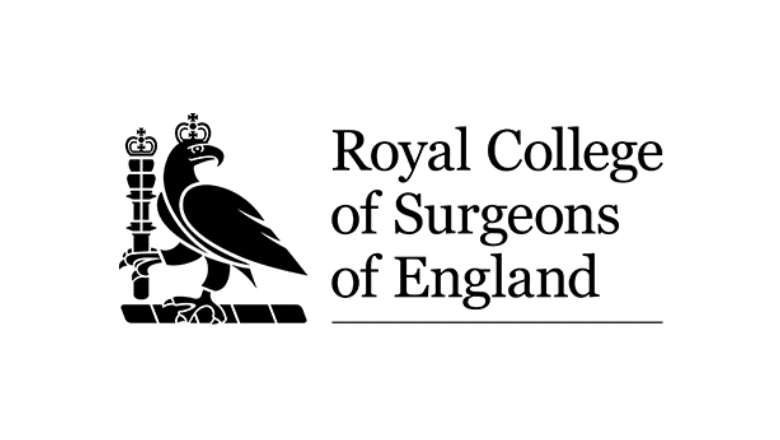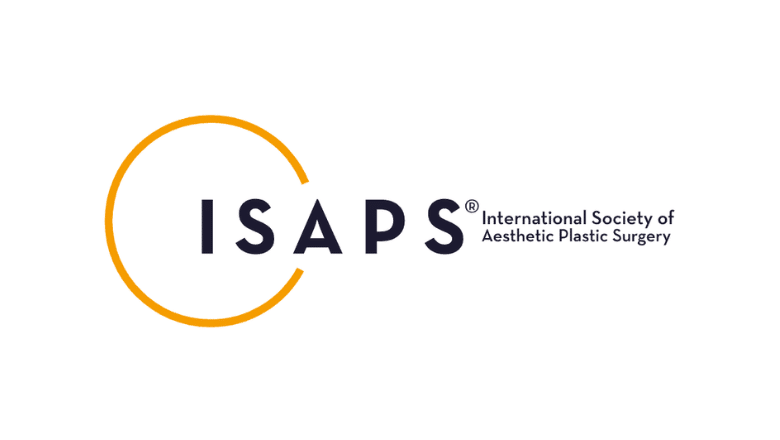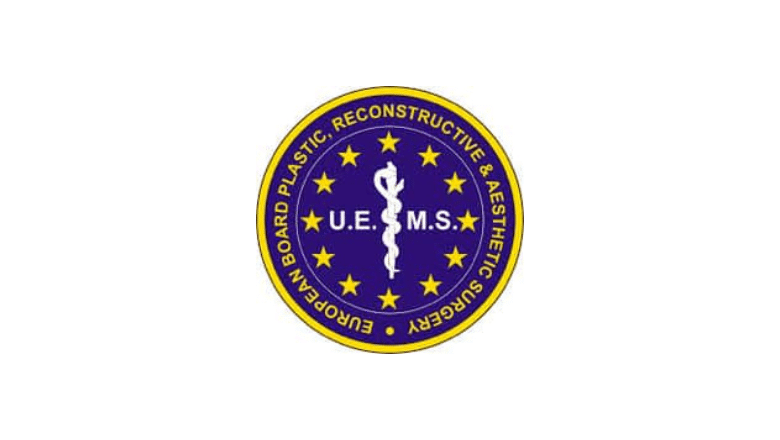Lower Body Lift London UK
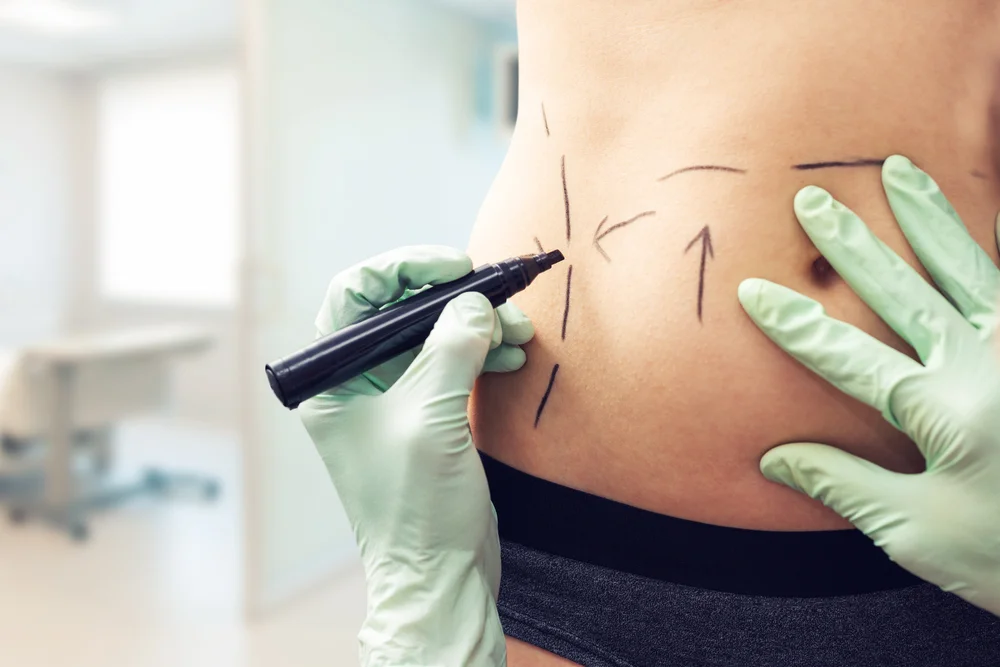
Achieve a sculpted waistline and enhanced body proportions with a transformative lower body lift procedure
The surgical procedure known as a lower body lift, alternatively referred to as 360 belt abdominoplasty or circumferential abdominoplasty, is a form of body reshaping surgery. This intricate procedure can achieve a multitude of transformative effects, including the smoothing and flattening of your abdominal region, the elimination of the phenomenon known as ‘apron belly‘, and the reduction of excess fat deposits, also known as ‘love handles’. This surgery is most commonly sought by those who have experienced significant weight loss.
RELATED: Excess Skin Removal Surgery
The process of shedding large quantities of weight, whether through bariatric surgery or disciplined dieting, can undoubtedly be an empowering and positive journey. Nonetheless, the dramatic loss of weight can also yield some less desirable effects, such as an abundance of surplus skin. In certain scenarios, the resultant excess skin around the belly can be so voluminous and lax that it assumes an apron-like appearance. This ‘abdominal apron’ typically drapes down at the front, sides, and rear of the body.
Beyond the visual displeasure, it may cause, this overabundant skin and underlying fat apron can lead to numerous complications. These can range from the onset of skin irritations and rashes, chafing caused by friction, challenges with maintaining good hygiene, and physical discomfort during daily activities to the development of back pain due to the weight imbalance.
Compared to the traditional tummy tuck or abdominoplasty, designed to target only the frontal abdominal region, the 360 lower body lift extends its scope. This comprehensive procedure also addresses and removes the loose, sagging skin and excess fat deposits present around the hips and back, while simultaneously lifting the buttocks for an overall better contour.
Located in the heart of central London, Centre for Surgery stands as a dedicated plastic surgery clinic with a particular focus on providing belt lipectomy solutions for post-bariatric patients who have undergone significant weight loss. Our team of surgeons possesses a wealth of experience and refined skills in performing circumferential abdominoplasty. Their expertise allows them to sculpt and redefine your abdominal region, waist, and lower back, giving patients a more pronounced contour and an improved tone.
What Is a Lower Body Lift?
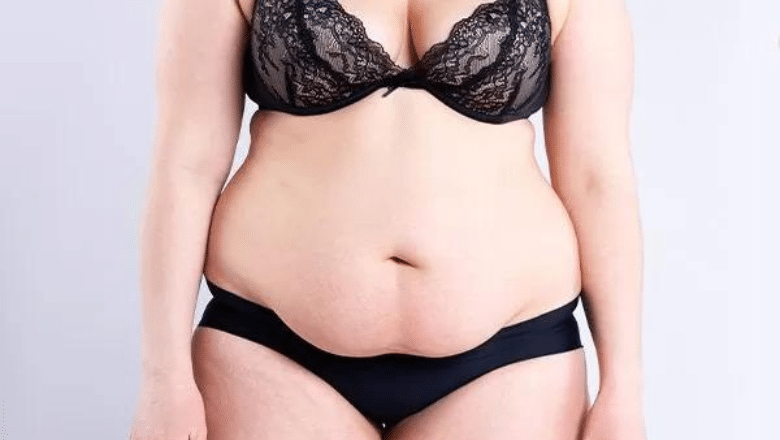
A lower body lift, often undertaken following substantial weight loss, is a comprehensive surgical procedure aimed at the removal of excess tissue, comprising both skin and fat, from the abdominal region, waistline (belt area), and back in one inclusive operation. It is also referred to as a circumferential lipectomy, owing to its encompassing approach that surgically excises loose fat, stretched skin, and reshapes the entire torso from the chest region down to the hips, extending around to the back.
Several factors may contribute to significant weight gain. This could be the result of pregnancy, a sedentary lifestyle leading to minimal exercise, consumption habits centred around unhealthy food, or simply genetic predispositions. As the body accumulates extra fat, the skin is compelled to expand in order to accommodate the additional mass, thereby losing some of its inherent elasticity or tensile strength.
Weight loss can be achieved through various means such as gastric bypass surgery, sleeve gastrectomy, gastric banding, or even following childbirth. However, in many cases, the skin does not fully contract back to its original state after such substantial weight reduction. The aftermath can often manifest as drooping folds of surplus skin and fat that hang loosely from the abdominal region, hips, and lower back.
This is where a lower body lift becomes highly beneficial. By undergoing this surgical procedure, you can effectively eliminate the problematic excess skin, resulting in a more streamlined and aesthetically pleasing body contour.
How Is a Lower Body Lift Different from an Abdominoplasty?

While both an abdominoplasty (commonly known as a tummy tuck) and a lower body lift aim to remove surplus skin and fat folds subsequent to major weight loss, their goals are similar in terms of body contouring and achieving a more proportional physique. However, the two procedures are fundamentally different in their scope and technique, and each comes with its own distinct set of advantages and limitations.
The primary differences between a lower body lift and an abdominoplasty can be summarised as follows:
- Area of focus: An abdominoplasty primarily focuses on the removal of excess skin and fat from the anterior part of the abdomen only. In contrast, a 360-degree abdominoplasty, synonymous with a lower body lift, extends beyond the frontal abdominal area to encompass the removal of redundant tissue from the sides, hips, and back as well.
- Muscle tightening: One of the hallmarks of a traditional abdominoplasty is that it not only removes excess skin and fat, but it also tightens the abdominal muscles. This is particularly beneficial in cases of diastasis recti, a condition where the abdominal muscles separate. On the other hand, a circumferential abdominoplasty or lower body lift typically does not include the tightening of split muscles.
- Navel repositioning: An abdominoplasty often involves the repositioning of the navel to ensure a natural-looking result post-surgery. In contrast, a lower body lift may not always include this step.
- Buttocks and outer hips lift: An additional advantage of a lower body lift over a tummy tuck is its ability to lift the buttocks and outer hips, providing a more comprehensive reshaping of the body contour.
In terms of choosing the most suitable surgical option, a 360-degree lower body lift may be more appropriate if you have an excess of skin and fat around your belly, hips, and back. However, suppose the area of concern is mainly a protruding lower abdomen, often referred to as a ‘mummy pooch’. In that case, a mini or traditional full tummy tuck might better serve your needs as opposed to a lower body lift.
Benefits of Lower Body Lift Surgery
A lower body lift procedure offers a broad array of advantages that extend beyond mere physical transformation. These benefits encompass improvements in mobility, mental well-being, overall hygiene, and personal aesthetics, thereby profoundly impacting various facets of an individual’s life. The notable advantages of a lower body lift procedure are as follows:
Enhanced Mental Health
Excess skin and fat around the waistline present more than just physical discomfort; they can also have a profound psychological impact. The presence of surplus skin can be a daily annoyance, impairing regular activities and impacting self-perception.
The accumulated skin and tissue distort the body’s natural contours, limiting the types of clothing that can be comfortably worn, particularly more form-fitting garments. The resulting alteration in personal appearance can affect self-esteem and influence how others perceive you, potentially creating anxiety and strain in both social and personal relationships.
Undergoing a lower body lift procedure eradicates this surplus skin, leading to an improved physical appearance and positively influencing self-perception and mental well-being.
Minimised Risk of Infections
The presence of redundant skin and tissue around the waistline can impede mobility and hinder the execution of daily tasks. A significant side effect of this loose, sagging skin is chafing, leading to uncomfortable skin irritation and potential rashes.
Furthermore, the creases and folds created by the excess skin can become breeding grounds for harmful microorganisms, heightening the risk of developing painful skin infections requiring prompt medical attention.
These complications can be virtually eliminated by opting for a lower body lift procedure. Post-surgery and subsequent recovery period, daily activities can be resumed without the discomfort and concerns associated with chafing, rashes, or infections.
Elimination of Love Handles
Following substantial weight loss, residual skin may hang loosely around the hips and thighs, creating an illusion of retained weight. This excess skin can contribute to the appearance of love handles or saggy buttocks, detracting from the visual achievement of your weight loss journey.
The lower body lift procedure serves to tighten this loose skin, reshaping the lower body to produce a more streamlined, taut appearance. This results in a more appealing contour, showcasing the true outcome of your weight loss efforts.
Am I suitable for Lower Body Lift Surgery?
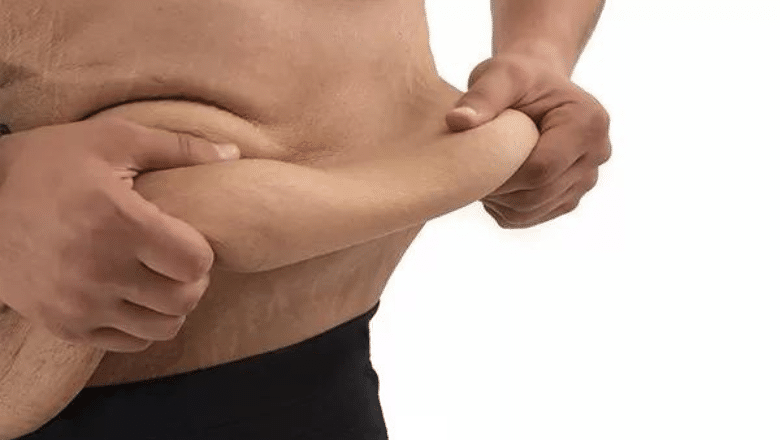
Lower body lift surgery is best suited for individuals who have experienced significant weight loss resulting in excessive, loose skin that may be impacting their quality of life. It’s important to note that subsequent weight fluctuations can influence this procedure’s results, so it’s recommended that candidates should have achieved their optimal weight before considering surgery and be committed to maintaining a healthy lifestyle post-procedure to ensure lasting results.
In addition to these key considerations, there are other crucial criteria that potential candidates must fulfil:
- Non-smoking: Individuals interested in this procedure should be non-smokers. The impact of smoking on surgical procedures is well-documented, with smokers having a higher risk of complications during and after surgery. It’s recommended to quit smoking well in advance of any surgical procedure.
- Physical and Mental Health: Ideal candidates should be in good physical health to tolerate the surgery and facilitate optimal recovery. Additionally, solid mental health is important to ensure that the individual is emotionally prepared for the procedure and the recovery process.
- Realistic Expectations: It’s crucial to have a realistic understanding of what the procedure can and cannot accomplish. While a circumferential abdominoplasty can significantly enhance your physical appearance and improve your quality of life, it’s not a magic solution. Your surgeon will discuss the potential results with you during your consultation to ensure your expectations align with achievable outcomes.
- Personal Motivation: The decision to undergo a lower body lift should be made for personal reasons, not due to external pressure or influence. Surgery is a significant decision and should be motivated by your own desires for improved health, comfort, and self-confidence.
Meeting these criteria can increase the likelihood of a successful procedure and a satisfactory surgical outcome. As always, a thorough consultation with a qualified plastic surgeon at Centre for Surgery is the first step in determining whether you are an ideal candidate for a circumferential abdominoplasty.
Lower Body Lift Surgery
The lwoer body lift is an extensive surgical procedure carried out under general anaesthesia. It typically requires around four to five hours in the operating room. Although this procedure can be paired with other surgeries to further enhance body aesthetics, prolonged periods under anaesthesia are generally avoided due to the increased risk of complications.
The surgical process commences with you lying on your back. The surgeon makes the initial incision between the hip bones, in proximity to the pubic bone. A secondary incision is crafted around the navel, which is subsequently repositioned while remaining connected to the abdominal wall muscles. The skin flap between these incisions is then excised, and any stubborn fat deposits are removed. If needed, the abdominal muscles underneath are tightened and repaired, marking the completion of the excess skin removed from your lower abdominal region.
Next, you will be gently turned onto your sides to facilitate the removal of excess skin from the flanks. The incision for this is strategically placed low, facilitating the concealment of the resultant scar within the lines of underwear or bikini bottoms. The skin on both sides is meticulously tightened, ensuring the maintenance of symmetry. Your surgeon will take into account the contours of your abdomen and the other side when removing surplus skin, to guarantee symmetrically balanced results.
Once the circumferential tummy tuck portion of the procedure is completed, the back lift process begins, and you are carefully turned onto your stomach. The surgeon will not only excise the extra skin from the lower back area but will also simultaneously tighten the skin to subtly lift the buttocks.
Concluding the procedure, the surgeon will suture the incisions made on your lower back, just as the previous incisions were secured throughout the process. This signifies the completion of the surgical procedure, marking the beginning of the next stage of your lower body lift journey: the recovery phase.
Recovery after a Lower Body Lift

The recovery phase following a lower body lift can vary among individuals based on numerous factors such as individual health, age, and the body’s healing capacity. Nonetheless, there are some typical recovery experiences you can anticipate after your surgery:
Drainage Tubes: Following the surgery, drainage tubes will be inserted at your incision sites. These tubes serve to collect and remove excess fluid, aiding in the healing process. They will typically be removed after several days, as directed by your surgeon.
Swelling: Swelling is a natural reaction to surgical trauma and will be most prominent in the 3-6 weeks following your belt lipectomy. As your body heals, the swelling will gradually diminish, with the majority of it subsiding by 2-3 months post-procedure.
Compression Garments: To manage the swelling and support the healing tissues, your surgeon will likely recommend wearing compression garments for a specified duration during your recovery period. These garments also help to shape your body as it heals.
Bruising: You can expect to see bruising in the surgical area, which usually peaks in the first two weeks after surgery. This bruising should then progressively fade, generally disappearing within a month.
Pain and Discomfort: Some pain and discomfort are common in the initial days following a 360 abdominoplasty, typically peaking during the first two to three days. Gradually, as your body recovers, these sensations will lessen.
RELATED: Recovery After Lower Body Lift Surgery
In terms of returning to normal activities, most patients require around four weeks post-surgery before they can resume their routine tasks. Strenuous exercises or activities should be avoided for approximately six weeks after a circumferential lipectomy to allow the body adequate time to heal.
Make sure to closely follow your surgeon’s postoperative recommendations to ensure a smoother, more efficient recovery after your belt abdominoplasty. This will allow your body the time it needs to heal properly and help you achieve the best possible results from your procedure.
Risks and Complications of the Circumferential Abdominoplasty Procedure
The lower body lift, is a comprehensive surgical procedure that, like all surgeries, carries certain risks and potential complications. Though many post-operative symptoms are temporary and can resolve without intervention, there are instances where immediate medical attention is required. Before deciding to undertake this procedure, discussing all potential risks and complications with your surgeon is crucial to ensure you’re making an informed decision.
Here are some potential risks and complications that may arise from a circumferential abdominoplasty:
- Numbness: Sensations of numbness in the abdominal region are not uncommon due to the disruption of nerve endings during the procedure. This is typically temporary, but it could take several months for full sensation to return.
- Bruising and Swelling: These are common post-surgical effects. While they should reduce progressively over time, if either persists or worsens, medical intervention may be required.
- Abdominal Tightness: You might experience a feeling of tightness in the abdomen due to the skin and tissues being repositioned and the underlying muscles potentially tightened. This sensation usually eases as the body heals and adjusts to the new contours.
- Fluid Accumulation and Seroma: Sometimes, fluid may accumulate under the skin, causing a condition known as a seroma. Depending on its size and the discomfort it causes, a seroma might need to be drained.
Should any of the following symptoms occur during your recovery period, seek immediate medical assistance:
- Excessive Bleeding: While some bleeding is expected, excessive or uncontrolled bleeding can indicate a serious complication.
- High Fever and Chills: These symptoms may indicate an infection, which needs to be treated immediately to prevent complications.
- Pus from Incisions: Pus oozing from surgical incisions is another sign of infection that requires immediate medical attention.
- Severe and Sudden Pain in the Calf or Difficulty Breathing/Shortness of Breath: These symptoms could potentially indicate a blood clot, which is a serious medical condition. If a blood clot travels to the lungs, it can result in a life-threatening condition known as a pulmonary embolism. Prompt medical intervention is essential in these cases.
Always closely follow your surgeon’s aftercare instructions and maintain regular communication about any concerns or symptoms you experience post-surgery. It’s paramount to prioritise your health and safety throughout the recovery process.
Lower Body Lift Cost London - How much does Body Lift Surgery Cost in London UK? Prices & Fees
The cost of a lower body lift, given its complexity and highly individual nature, varies greatly from patient to patient. Several factors contribute to the final cost, including the surgeon’s fee, anaesthetist fees, and facility fees, which often depend on the duration of the procedure in the operating theatre.
If you’re seeking an estimate for the cost of lower body lift surgery in London, we recommend contacting Centre for Surgery directly. Upon your initial consultation, we can provide you with a more precise approximation of the expected surgical costs based on your specific needs and circumstances.
With regards to the question of coverage for belt lipectomy surgery by the NHS or private health insurance, it is generally considered a cosmetic procedure and, therefore, typically not covered. However, there are some exceptions. In cases where the procedure is deemed medically necessary – for example, when the excess skin causes significant physical discomfort or medical issues – there may be potential for coverage. The NHS has stringent criteria for such admissions, so it’s essential to discuss this with your GP or insurance company to understand whether you might be eligible for treatment coverage.
Why choose Centre for Surgery?
Centre for Surgery is a renowned centre for excellence for body contouring surgery after massive weight loss. If you have developed lax skin and redundant skin folds around the abdomen, thighs, flanks or lower back, we recommend an expert consultation with a specialist plastic surgeon at Centre for Surgery in London. Our plastic surgeons have many years of experience performing reconstructive surgery for patients who have undergone massive weight loss and are skilled in lower body lifts, belt lipectomy, and upper body lifts. At your consultation, your surgeon will review your medical history in detail and any current medicines you may be taking, followed by a physical examination to determine the correct type of body lift procedure to be performed. The surgeon will explain the lower body lift procedure and discuss potential risks and complications. You can ask to see before and after photos of patients who have undergone similar procedures to help you visualise how you could look after the procedure. Once you have decided to proceed with lower body lift surgery, you will meet with one of our friendly and knowledgeable patient coordinators. They will be able to provide a cost for body lift surgery and help you plan for your procedure.
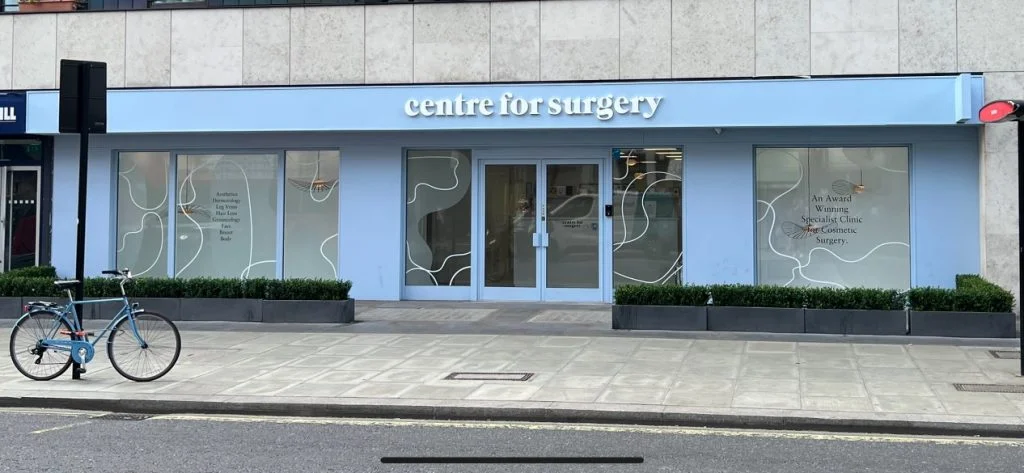
FAQs
-
What is the medical term for a full-body lift?A full-body lift, also referred to as a whole body plastic surgery or a 360-degree body lift, encompasses various procedures aimed at removing excess loose skin after significant weight loss. It combines both lower body lift and upper body lift techniques, which may include circumferential abdominoplasty (in some cases, a fleur de lis abdo may be performed), breast surgery, arm and thigh lifts, bra line back lift, and other necessary skin reduction surgeries.
-
Which specific conditions can be addressed through a full-body lift?A comprehensive body lift surgery can effectively treat several conditions, including dimpled or uneven soft tissue, lax and loose skin, excess fat and tissue, sagging body contours, stretch marks, abdominal bulge, back rolls, extra hanging thighs, lower buttock, and a flat appearance of the upper part of the buttock.
-
How can you determine if you are a suitable candidate for a body lift?If you have undergone substantial weight loss through methods such as diet and exercise or weight loss surgery and are now left with loose, hanging skin throughout your body, a body lift is often the most optimal solution to achieve a toned and tight physique. It is important to note that liposuction and exercise alone are insufficient for effectively removing the excess skin.
-
What distinguishes a tummy tuck from a lower body lift?While both procedures focus on enhancing the appearance of the abdomen, a lower body lift extends its scope beyond the front abdominal area. It involves the removal of excess skin and stubborn fat deposits from the entire abdominal region, as well as the flanks, hips, thighs, and buttocks. On the other hand, a standard tummy tuck solely addresses excess skin and fat deposits in the front abdominal area.
-
What is a circumferential body lift?During a circumferential body lift, a series of incisions are made encircling the entire circumference of the body. These incisions allow for the removal of excess skin and rigid fat deposits, resulting in a sculpted appearance.
-
What procedures are typically included in a lower body lift?A lower body lift combines the elements of a tummy tuck and a thigh lift. By removing excess skin from the stomach, hips, thighs, and flanks, this comprehensive procedure helps achieve a contoured appearance in the lower body.
-
What does an upper body lift entail?An upper body lift involves the integration of various surgical techniques, including arm lift, breast lift or reduction, and liposuction. In some cases, a bra line back lift may also be necessary. These procedures collectively aim to transform the appearance of the upper body.
-
What is a lower back lift?A lower back lift is a procedure that combines liposuction, abdominoplasty, and thigh lift techniques. It not only sculpts the lower back area but also lifts and enhances the appearance of the thighs and buttocks.
-
How does a belt lipectomy differ from a tummy tuck?A belt lipectomy, also known as a circumferential abdominoplasty, involves a 360-degree incision around the waistline. This procedure not only addresses the appearance of the abdomen but also improves the aesthetic of the waist, buttocks, and upper thighs. Conversely, a regular tummy tuck focuses solely on the abdominal area.
-
What is the purpose of a 360 body lift?A 360 body lift typically entails the removal of excess skin from the abdomen, lower back, and the elevation of the buttocks. This comprehensive procedure aims to achieve a more sculpted and toned appearance.
-
What are the effects of a 360 body lift?A 360-degree body lift involves the removal of excess fat and skin along the entire waistline, back, and abdomen. This comprehensive procedure helps to improve body contours, tighten loose skin, and create a more aesthetically pleasing appearance in the treated areas. By addressing excess fat and skin around the waist, back, and abdomen, a 360 body lift can result in a more sculpted and toned physique.
-
What is involved in a 360 tummy tuck?A 360-degree tummy tuck, as the name suggests, takes a circumferential approach to abdominoplasty. This procedure targets the entire mid-section of the body, including the abdomen, flanks, and back. It involves the removal of excess skin and rigid fat deposits from these areas, resulting in a smoother and more contoured appearance.
-
What is the purpose of a beltectomy?A beltectomy is a surgical procedure that aims to remove significant amounts of skin and fat from the lower torso and hips. By addressing excess tissue in these areas, a beltectomy helps to reshape and redefine the waistline, resulting in a more proportionate and balanced figure.
-
What are the potential benefits of a full-body lift?A full-body lift offers several potential benefits for individuals who have experienced significant weight loss or have loose, sagging skin due to other factors. These benefits include:
Improved body contours: A full-body lift helps to reshape and redefine body contours, providing a more toned and sculpted appearance.
Tightened and smoother skin: Excess skin is removed during the procedure, resulting in tighter and smoother skin that fits the new body shape.
Enhanced self-confidence: The transformation achieved through a full-body lift can significantly boost self-esteem and confidence, allowing individuals to feel more comfortable and satisfied with their appearance.
Removal of excess fat deposits: In addition to skin removal, a body lift may involve the removal of excess fat deposits, resulting in a more streamlined and balanced physique.
Addressing multiple areas simultaneously: With a full-body lift, multiple areas of the body can be treated in a single surgical procedure, reducing the need for multiple surgeries and recovery periods.
Correction of physical discomfort: Excess skin and tissue can cause physical discomfort and skin irritation. A full-body lift helps alleviate these issues, allowing for improved comfort and mobility. -
How can I prepare my body for body lift surgery?Preparing your body for plastic surgery is essential to ensure a smooth and successful procedure. Here are some guidelines to follow:
Prioritize your overall health: It is important to be in good general health before undergoing surgery. Maintain a balanced diet, exercise regularly, and follow a healthy lifestyle to optimize your body's condition.
Plan your time off work: Arrange your work schedule and take the necessary leave in advance, ensuring that you have enough time to recover comfortably without rushing back to your job.
Arrange for support: Coordinate with a trusted friend or family member who can accompany you to the surgery center, drive you home afterward, and provide assistance during the initial recovery period.
Quit smoking and limit alcohol consumption: If you smoke or drink alcohol, it is advisable to quit or at least significantly reduce these habits several weeks before your surgery. Smoking and excessive alcohol consumption can impede the healing process and increase the risk of complications.
Medication adjustments: Follow your surgeon's instructions regarding any medication you are currently taking. Your surgeon may advise you to adjust or temporarily discontinue certain medications to minimize potential risks during and after surgery.
Complete medical tests: Your surgeon may require specific lab tests to evaluate your overall health and ensure you are fit for surgery. Schedule and complete these tests as advised by your surgeon. -
How should I prepare for a lower body lift?Preparing for a lower body lift surgery involves specific considerations to ensure the best possible outcome. Here are some steps to take:
Smoking and alcohol cessation: It is crucial to quit smoking and refrain from alcohol consumption for a few weeks before your lower body lift surgery. These substances can negatively affect the healing process and increase the risk of complications.
Medication adjustments: Follow your surgeon's instructions regarding any medications you are currently taking. Some medications may need to be adjusted or temporarily stopped prior to the surgery, as advised by your surgeon.
Avoid blood-thinning medications: Your surgeon will likely instruct you to avoid taking any blood-thinning medications or supplements, as they can increase the risk of bleeding during and after the surgery.
Transportation and post-surgical care: Arrange for someone trustworthy to drive you home after the surgery, as you may not be able to drive yourself. Additionally, plan for someone to assist you during the initial recovery phase, as you may require help with daily activities.
Time off work: Coordinate with your employer to take the necessary time off work to allow for a smooth recovery. Adequate rest is crucial during the healing process. -
What items should I pack in my hospital bag for lower body lift surgery?When preparing your hospital bag for body lift surgery, consider including the following essential items:
Compression garments: These garments are typically provided by your surgeon and are important for supporting the surgical areas and promoting healing. Pack any garments you have been instructed to wear.
Comfortable clothing: Pack loose-fitting and easy-to-remove clothing to wear during your hospital stay. Opt for items that do not put pressure on the surgical areas and allow for easy access during dressing changes.
Water bottle and snacks: Staying hydrated and nourished is important for your recovery. Bring a refillable water bottle and some light snacks to have on hand.
Slippers: Comfortable slippers or slip-on shoes will make it easier to move around the hospital or surgical centre.
Toiletries: Pack your toiletries, including toothbrush, toothpaste, soap, shampoo, and any other personal hygiene items you may need during your stay.
Skin moisturiser: Keeping your skin hydrated can aid in the healing process. Include a moisturiser that is suitable for your skin type.
Required medical documents: Bring any necessary medical reports or documents that your surgeon may require for the procedure. This may include any lab reports or medical records related to your health.
Chargers for electronic devices: If you plan to bring electronic devices such as a phone or tablet, don't forget to pack their chargers to ensure you stay connected and entertained during your hospital stay.
Hand towel: Having a small hand towel can be useful for freshening up or wiping your face. -
What procedures are typically included in a body lift?A body lift is a comprehensive surgical procedure that addresses multiple areas of the body. It typically includes:
Abdominoplasty (Tummy Tuck): This involves the removal of excess skin and fat from the abdominal area, tightening the underlying muscles for a flatter and more toned midsection.
Lower Body Lift: This procedure focuses on removing excess skin and fat from the lower back, hips, and buttocks, creating a more sculpted appearance.
Arm Lift (Brachioplasty): It targets sagging skin and excess fat in the upper arms, resulting in firmer and more youthful-looking arms.
Thigh Lift: This procedure aims to remove excess skin and fat from the thighs, improving their contour and firmness.
Breast Lift (Mastopexy) or Breast Reduction: It involves lifting sagging breasts or reducing their size and reshaping them for a more youthful and proportionate appearance.
Liposuction: This may be performed in conjunction with other procedures to remove stubborn fat deposits and further contour the body.
The specific combination of procedures included in a body lift will vary based on individual needs and desired outcomes. -
How long does a lower body lift procedure typically take?The duration of a lower body lift surgery can vary depending on the extent of the procedures involved and the individual patient's needs. Generally, a lower body lift can take anywhere between 4 to 6 hours to complete. The surgeon will provide a more accurate estimate during the consultation, taking into account the specific procedures planned for your body lift.
-
How long should I wear compression garments after a lower body lift?Compression garments play a crucial role in the healing process after a lower body lift surgery. Typically, patients are advised to wear compression garments for a minimum of six weeks following the procedure. These garments help control swelling, promote proper blood circulation, and provide support to the surgical areas, aiding in the recovery and optimising results. However, the specific duration of compression garment use may vary based on individual circumstances, and your surgeon will provide detailed instructions tailored to your case.
-
When can I resume normal activities and stand up straight after a body lift?The timeline for resuming normal activities and standing up straight after a lower body lift can vary among individuals. While most patients are able to return to their daily routine within two to four weeks, it is important to listen to your body and follow your surgeon's guidance. Standing up straight is usually achievable within a week post-surgery, but it's essential to avoid any strenuous activities or heavy lifting during the initial recovery period to allow for proper healing.
-
What should I eat after a body lift surgery?After a body lift surgery, it is important to nourish your body with a healthy and balanced diet to support the healing process. Focus on consuming nutrient-rich foods such as fruits, vegetables, lean proteins, and whole grains. These provide essential vitamins, minerals, and antioxidants that promote tissue healing and overall well-being. It is also crucial to stay hydrated by drinking plenty of fluids, primarily water. Following your surgeon's dietary recommendations and any specific restrictions or guidelines they provide is vital for a smooth recovery.
-
When can I start smoking after the surgery?Smoking can have detrimental effects on the healing process and compromise the results of a body lift surgery. It is highly recommended to refrain from smoking for at least six to eight weeks or as instructed by your surgeon. Smoking constricts blood vessels, impairs oxygen flow, and increases the risk of complications such as poor wound healing and infections. Quitting smoking altogether is ideal for your overall health and optimising the outcomes of the surgery.
-
Can I suntan after body lift surgery?Sun exposure, especially during the early stages of recovery, can have negative effects on the healing process and the appearance of scars. It is advisable to avoid tanning and prolonged sun exposure for a minimum of six to eight weeks after a body lift surgery. Direct sunlight can cause pigmentation changes, darkening of scars, and scar growth. When spending time outdoors, it is crucial to protect the surgical areas by wearing sun-protective clothing and applying a broad-spectrum sunscreen with a high SPF to minimize the risk of adverse effects and promote proper healing.
-
How would you describe the level of pain associated with a body lift?A body lift surgery is performed under general anaesthesia, ensuring that you won't feel any pain during the procedure itself. However, it is normal to experience some level of pain and discomfort during the recovery process. Your surgeon will prescribe painkillers to help manage any discomfort you may feel after the surgery. The intensity of pain can vary among individuals, but it is generally manageable with proper pain management strategies.
-
What is the level of pain typically experienced after a lower body lift?Similar to a body lift, a lower body lift surgery is performed under general anesthesia, ensuring that you do not experience any pain during the procedure. The recovery process may involve some discomfort, but it is typically not characterized by severe pain. Your surgeon will provide pain medication to help alleviate any post-surgical discomfort. Although discomfort is expected, it should gradually subside as you heal.
-
Is a body lift surgery considered safe?As with any surgical procedure, a body lift carries certain risks and considerations. It is important to choose a qualified and experienced plastic surgeon and follow all pre and post-surgery instructions to minimise potential complications. While a body lift is generally regarded as a safe procedure, it is essential to have a thorough discussion with your surgeon to understand the potential risks and benefits specific to your case.
-
What are some potential risks associated with a body lift?Like any surgery, a body lift carries certain risks. Some potential risks include bleeding, fluid accumulation, infection, scarring, numbness, and the possibility of blood clots. However, it's important to note that complications are relatively rare, and by selecting a skilled surgeon and adhering to proper post-operative care, the likelihood of experiencing these risks can be significantly reduced.
-
Will a body lift leave noticeable scars on my body?Yes, a body lift surgery will result in scars on your body. However, over time, these scars tend to fade and become less noticeable. Your surgeon will take special care to minimise the appearance of scars by using advanced surgical techniques and proper wound closure methods. Once you have fully healed, you can discuss scar minimisation options with your surgeon, including potential dermal treatments.
-
How can I reduce scar tissue after a body lift?To minimize the formation of scar tissue after a body lift, consider the following measures:
Choose a specialist plastic surgeon and body lift expert who employs meticulous surgical techniques to minimize scarring.
Follow all post-operative care instructions provided by your surgeon, including proper wound care and the use of prescribed topical treatments.
Avoid using products or clothing that may cause irritation or rubbing on the surgical sites.
Protect the healing scars from direct sun exposure by wearing sunscreen and covering the treated areas.
Keep your skin moisturized using recommended moisturizers or scar-reducing creams as advised by your surgeon.
By implementing these strategies and maintaining regular follow-up appointments with your surgeon, you can optimise the healing process and minimise the appearance of scars. -
Is it possible to gain weight after a body lift?Yes, it is possible to gain weight after a body lift surgery. To maintain the results of the procedure, it is important to adopt a healthy and balanced lifestyle, including a nutritious diet and regular exercise. Excessive weight gain can lead to the stretching of the remaining skin and compromise the aesthetic outcome of the body lift. If significant weight fluctuations occur after the surgery, additional skin reduction procedures may be necessary to address the excess skin.
-
Can I become pregnant after a lower body lift?Yes, it is possible to become pregnant after undergoing a body lift surgery. While it is generally recommended to undergo such procedures after completing your family, there are no inherent restrictions preventing pregnancy post-surgery. However, it is important to discuss your plans with your surgeon, as pregnancy may impact the long-term results.
-
What is a lower body lift?Body lift, also known as a belt lipectomy is a body contouring procedure designed to remove lax skin and fat from the abdomen, hips and buttocks following massive weight loss.
The most common surgical techniques used for body lift surgery include a combination of liposuction and surgical excision. In some cases, fat grafting may used in certain areas such as the buttocks to restore volume as this is commonly lost following massive weight loss. -
Am I a suitable candidate for body lift surgery?Determining your candidacy for body lift surgery requires a comprehensive evaluation by a qualified surgeon. To get started, schedule a consultation with a plastic surgeon at Centre for Surgery experienced in body lift procedures. During the consultation, your surgeon will assess your medical history, current health condition, weight loss goals, and the specific areas of concern. They will also discuss your expectations and desired outcomes.
Based on this evaluation, the surgeon will determine if you are a suitable candidate for body lift surgery. Factors that may influence candidacy include overall health, stability of weight loss, skin elasticity, and specific body areas requiring treatment. -
Am I a good candidate for body lift surgery?Patients who develop excess skin around their abdomen, hips and lower back following massive weight loss may be good candidates for body lift. Patients should be as close to their ideal body weight as possible and should ideally have a BMI below 25 to reduce the risk of complications. Patients should be in good health with no significant medical conditions. All patients should have a good understanding of what the procedure involves and what to expect in the recovery period as all body lift surgery is a significant undertaking. Patients should also have realistic expectations for what they hope to achieve from the procedure.
-
How long does the lower body lift procedure take to perform?Depending on the type of body lift procedure and the extent of surgical excision and liposuction to be performed, a body lift takes on average between 3 to 5 hours to perform. In many cases, it may be safer to stage the body lift procedure to reduce the procedure time as prolonged procedure times are associated with a higher risk of complications occurring.
-
Does lower body lift surgery result in scars?Body lift surgery involves lengthy surgical incisions to surgically remove lax skin and fat. All incisions result in a scar although scars generally flatten and fade with time. Your surgeon takes care to place incisions in natural skin folds however the scars will generally be visible. After you have fully healed from from surgery, your surgeon may prescribe silicone gel sheets to place over the scars to improve their appearance. Centre for Surgery are experts in scar revision and have access to the full range of techniques including laser and microneedling for optimising the appearance of scars.
-
When can I return to work after lower body lift surgery?Most patients will be medically fit enough to resume work duties about two weeks after the body lift procedure at Centre for Surgery. Body lift surgery is composed of a number of different procedures which are often performed in combination to achieve great results. Your surgeon will be able to advise you on the optimum time to return to work when you are in the early postoperative phase after body lift.
-
Is a body lift typically covered by private medical insurance?The coverage of a body lift procedure by private medical insurance can vary depending on the insurance provider and policy. In some cases, a body lift may be covered if it is deemed medically necessary rather than purely cosmetic. Factors such as significant weight loss, resulting in excess skin that causes functional limitations or hygiene issues, can increase the likelihood of insurance coverage. However, it is important to consult with your insurance provider to understand the specific terms and conditions of your policy and determine if a body lift is eligible for coverage.
-
Will health insurance cover surgery for loose skin?Health insurance may cover surgery for loose skin if it is considered medically necessary. In cases where loose skin causes physical discomfort, interferes with daily activities, or leads to hygiene issues, insurance coverage may be more likely. However, each insurance policy and provider may have different criteria for coverage. It is recommended to contact your insurance provider directly to discuss the specific details of your policy and inquire about coverage for surgery to address loose skin.
-
How much does lower body lift surgery typically cost?The cost of body lift surgery can vary significantly depending on various factors, including the specific procedures involved, the surgeon's experience and expertise, and any additional services or facilities provided. It is best to consult with a reputable plastic surgeon or clinic to obtain an accurate cost estimate tailored to your individual needs and goals. They will evaluate your case, discuss the required procedures, and provide a detailed breakdown of the associated costs. Keep in mind that the cost of body lift surgery often includes surgical fees, anaesthesia fees, facility fees, pre and post-operative care, and any necessary follow-up appointments.
What To Expect
The consultation
When considering lower body lift surgery after experiencing massive weight loss, we would advise to have a face to consultation with one of our experienced surgeons prior to having body lift surgery. At your consultation, the surgeon will explain the possible combinations of body lift procedures to address lax skin and excess fat, and which is most suitable and preferential for you given your needs and preferences. A number of measurements are taken of the body areas where skin is to be surgically removed and an assessment will be made of the soft tissue quality. Soft tissue quality is often very poor in body lift patients and liposuction alone will not address the overhanging skin. Your surgeon is skilled in all types of body lift surgery including belt lipectomy and the most appropriate choice will be made based on your physical examination. The surgeon will also give information on the location of the incisions for the lower body lift procedure which usually runs from hip to hip. At Centre for Surgery, our surgeons perform a lower body lift as a 2 stage procedure. First stage is the abdominoplasty procedure followed by a buttock and thigh lift as a second stage procedure. If you are having a consultation for revision surgery after body lift surgery performed elsewhere, you surgeon may want to see you again for a second consultation. He will want to see the medical records from your previous surgery to plan the revision procedure more effectively.
High-resolution photos will be taken and your surgeon may also use computer digital imaging to map your areas of concern in closer detail. Your surgeon will take time to discuss the important risks and potential complications of body lift surgery and what you can expect in the postoperative period. Body lift surgery after massive weight loss is a significant undertaking and it is important to be in optimal health prior to having the procedure.
The surgeon will also take a full medical history which includes previous operations, current list of medicines taken and any potential allergies. This information will be used to decide on your fitness for the body lift procedure. If you are deemed to be a suitable candidate for surgery then we would recommend to spend a period of time to reflect on all the information given. We always recommend a minimum of a '2 week cool off period' for to weigh up your options.
All our prospective patients are more than welcome to have as many follow-up consultations after their initial consultation to make sure you are fully empowered with all the information to make an informed decision for proceeding with body lift surgery at Centre for Surgery.
Before the procedure
Once you have decided that a lower body lift procedure is right for you, our preoperative assessment team will be in contact to prepare you for the procedure.
The following are recommended actions to take:
- You should make any necessary adjustments to your recovery area at home like comfortable seating and cushioning. It is also useful to have the bathroom close by while you recover in the first few days after surgery.
- For 6 weeks beforehand, it is highly recommended to stop smoking as active smoking is associated with a number of risks including delayed wound healing which could result in wound infection. There is also a risk of impaired blood supply to the skin flaps and this could result in wound breakdown.
- You should stop oestrogen containing oral contraceptives 4 weeks before your procedure to reduce the risk of DVT.
- You should also avoid aspirin and all medicines containing aspirin for at least one week prior to the procedure.
- For 6 hours before the lower body lift procedure, you should refrain from eating any food or any type of drink apart from sips of clear fluid (water and tea/coffee without added milk) which is allowed for up to 2 hours before the procedure.

